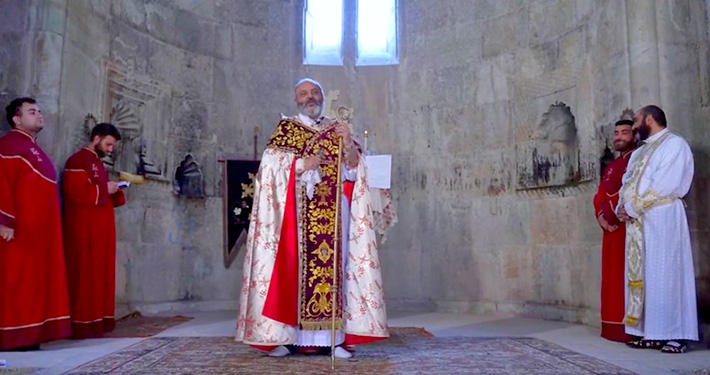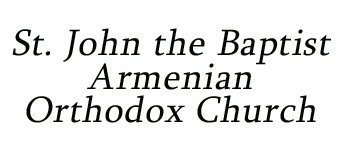PILGRIMS OF THE HOLY CROSS

Bishop Bagrat Galstanyan offers some poignant thoughts on the meaning of the Cross, today and eternally
An enormous procession of pilgrims converged on the Mother See of Holy Etchmiadzin last week, to celebrate a uniquely Armenian feast day dedicated to the Holy Cross of Varak.
On September 24, 2022, the eve of the feast day, faithful from across the region came on foot to the Mother See, to be present as a holy relic of the church was brought forth for its annual display before the public.
The relic is a fragment of the True Cross on which Jesus Christ was crucified. Armenian Church tradition holds that the relic was first brought to Armenia by St. Hripsime and her sister nuns, just prior to the time of Armenia’s conversion to Christianity. But it lay hidden in a cave on Mount Varak, until it was rediscovered in the 7th century by a monk named Totig, thanks to a visionary dream.
The Holy Cross of Varak became the centerpiece of the great Monastery of Varak; but in more recent times the relic was transferred to the vaults of Holy Etchmiadzin for safekeeping.
During last week’s pilgrimage, the relic was brought out by the order of His Holiness Karekin II, Catholicos of All Armenians, for an antasdan service on Etchmiadzin’s large outdoor altar. Bishop Mushegh Babayan, sacristan of the Mother Cathedral, blessed the crowd of pilgrims—among whom were soldiers from the armed forces of Armenia and Artsakh—and individuals were invited to approach and venerate Christ’s Cross.
Later, the relic was reverently conveyed to Armenia’s Tavush province, on the northeastern border, for the festal celebrations at Nor Varakavank, or the New Monastary of Varak. There, Bishop Bagrat Galstanyan offered some poignant thoughts on the meaning of the Cross, today and eternally.
“In the mystery of his Cross, may the Lord lift us up and grant us strength,” he said. “May we be worthy to say that we confess nothing else, O Lord, other than the great mystery and love entrusted to us in the name of your Holy Cross. And may your love be revealed through this Armenian Cross of Varak monastery.”
The original Varakavank, or Monastery of Varak, was built in the early 11th century on an older religious site. Initially the royal tomb of the Ardzruni dynasty, it became the seat of the Armenian Church in Van. Once the most celebrated monastic complex in the region, it was laid to waste in the aftermath of the Genocide.
Nor Varakavank was built in the 13th century, in Armenia’s Tavush province. It too fell into ruin, but has been lately restored and is an active religious sanctuary today.
Source: www.armenianchurch.us


